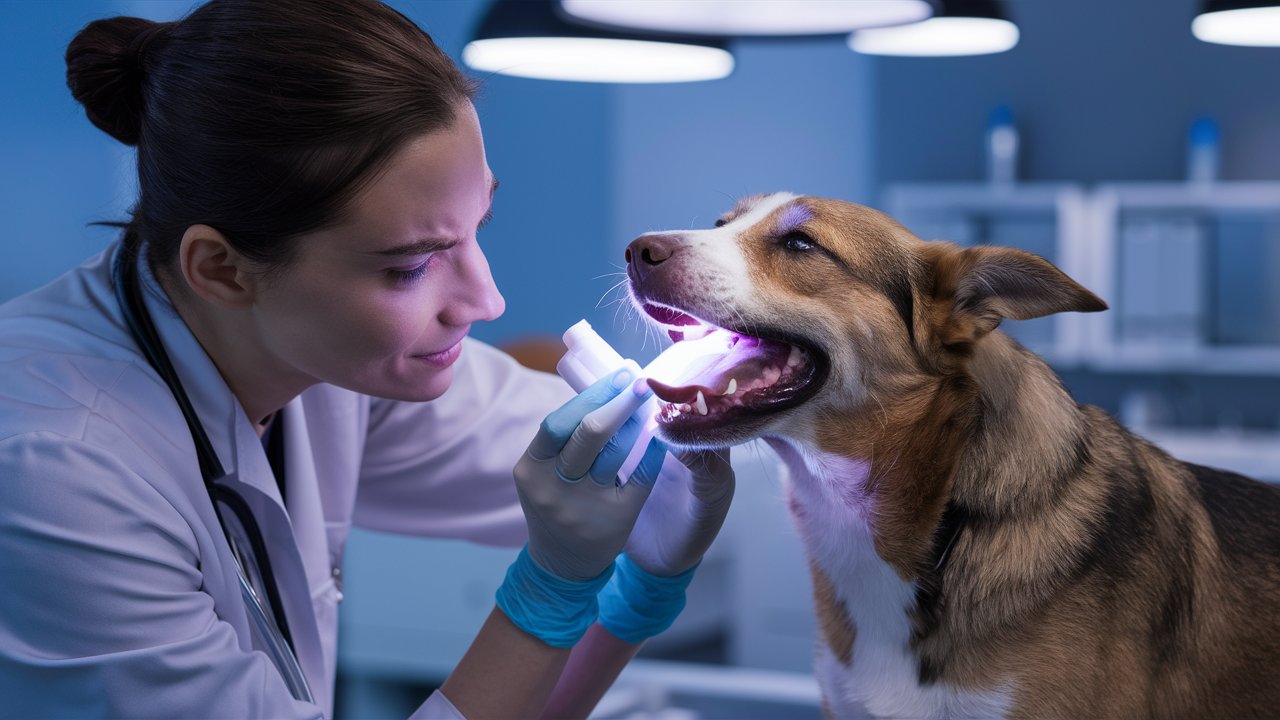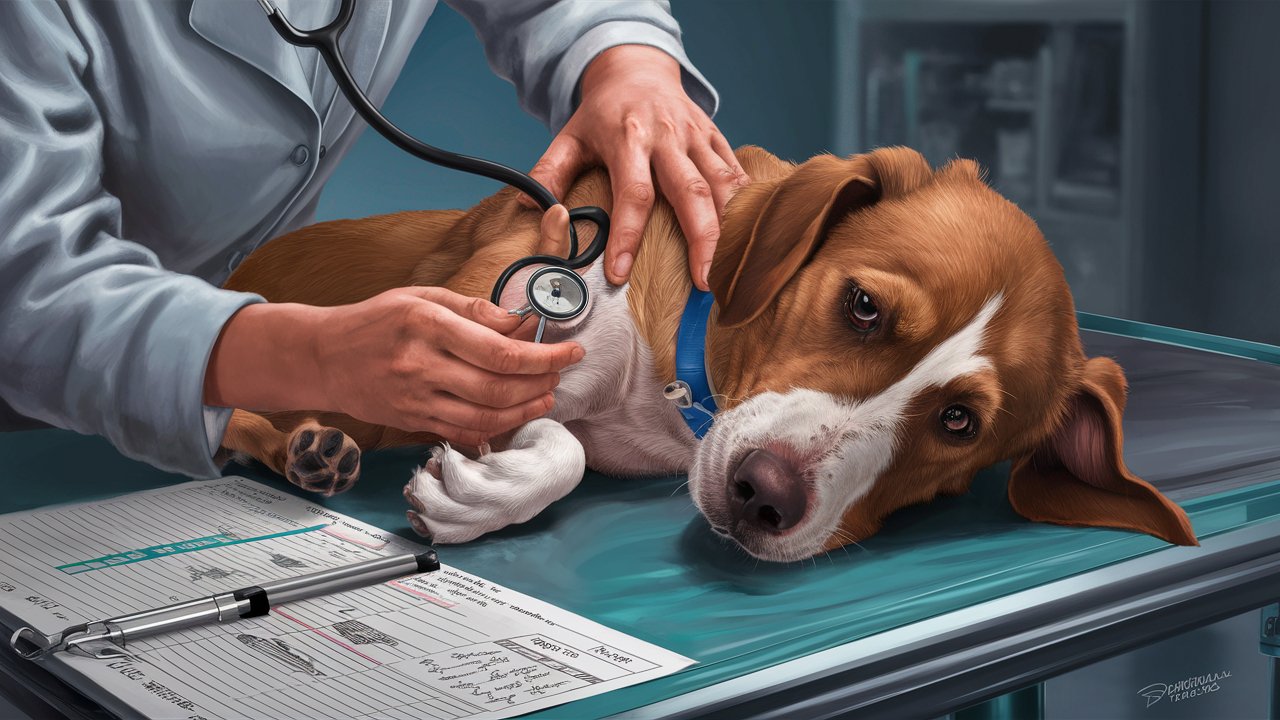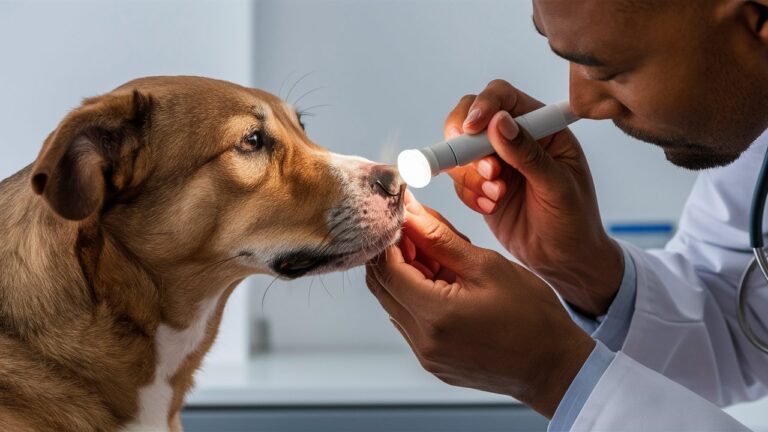Anesthesia Sensitivity in Dogs: Origins, Risks, 100% Comprehensive Management
Anesthesia is a critical component of veterinary medicine, facilitating surgical procedures and diagnostic interventions while ensuring patient comfort and safety. However, not all dogs respond to anesthesia in the same way. Anesthesia sensitivity, characterized by heightened reactions or adverse effects to anesthesia drugs, presents significant challenges for veterinary professionals. Understanding the complexities of anesthesia sensitivity is essential for mitigating risks, optimizing anesthesia protocols, and ensuring favorable outcomes for canine patients.
In this comprehensive exploration, we delve into the intricacies of anesthesia sensitivity in dogs. From exploring the underlying causes and genetic predispositions to discussing breed-specific considerations and management strategies, this article aims to provide veterinary professionals and pet owners with a nuanced understanding of anesthesia sensitivity. By examining symptoms, risks, preventive measures, and future directions in anesthesia management, we seek to enhance awareness and promote informed decision-making in veterinary anesthesia practices.
Through empirical insights, case studies, and practical guidance, we navigate the landscape of anesthesia sensitivity, highlighting the importance of tailored care, advanced monitoring technologies, and continuous education in veterinary anesthesia. Ultimately, our goal is to empower veterinary professionals with the knowledge and tools needed to deliver safe, compassionate anesthesia care while ensuring the well-being of every canine patient under their watch.

Understanding Anesthesia Sensitivity In Dogs
Anesthesia plays a crucial role in veterinary medicine, enabling veterinarians to perform surgeries, dental procedures, and diagnostic imaging effectively and safely. However, not all dogs respond to anesthesia in the same way. Anesthesia sensitivity refers to the variation in how individual dogs react to anesthesia drugs, influenced by a combination of genetic factors, health status, and breed characteristics.
1. Definition and Types of Anesthesia Used in Veterinary Practice
Anesthesia involves the administration of drugs to induce a temporary loss of sensation or consciousness, facilitating medical procedures that would otherwise cause pain or distress to the animal. The two primary types of anesthesia used in veterinary practice are:
- General Anesthesia: This type of anesthesia results in loss of consciousness and sensation throughout the body. It is commonly used for major surgeries and procedures where the animal needs to be completely immobilized and unaware of pain stimuli.
- Local Anesthesia: Local anesthesia targets a specific area of the body, numbing the nerves in that area to block pain signals. It is often used for minor procedures or to supplement general anesthesia to reduce the amount of general anesthetic required.
2. What Anesthesia Sensitivity in Dogs Entails
Anesthesia sensitivity refers to the variability in an individual dog’s response to anesthesia drugs. While most dogs tolerate anesthesia well, some may exhibit heightened sensitivity, leading to adverse reactions or prolonged recovery periods. Sensitivity can manifest as increased susceptibility to the effects of anesthesia drugs, including sedation, respiratory depression, or cardiovascular instability.
3. Factors Influencing Anesthesia Sensitivity In Dogs
Several factors contribute to anesthesia sensitivity in dogs, including:
- Age: Very young puppies and senior dogs may have reduced physiological reserves and may be more susceptible to anesthesia-related complications.
- Breed: Certain dog breeds are genetically predisposed to anesthesia sensitivity. For example, brachycephalic breeds (such as Bulldogs and Pugs) are more prone to respiratory issues, which can complicate anesthesia.
- Health Status: Dogs with pre-existing health conditions, such as heart disease, liver disease, or respiratory disorders, may experience increased anesthesia sensitivity due to altered drug metabolism or compromised organ function.
- Genetics: Genetic factors play a significant role in determining how dogs metabolize and respond to anesthesia drugs. Variations in genes encoding drug-metabolizing enzymes or drug receptors can influence an individual Anesthesia Sensitivity in Dogs.
Understanding these factors is crucial for veterinarians to tailor anesthesia protocols and monitor dogs closely during anesthesia to mitigate potential risks associated with anesthesia sensitivity.
Causes of Anesthesia Sensitivity In Dogs
Anesthesia sensitivity in dogs can arise from various underlying causes, ranging from genetic predispositions to pre-existing health conditions. Understanding these causes is essential for veterinarians to assess and manage anesthesia risks effectively.
1. Genetic Predispositions and Breed-Specific Considerations
Genetics plays a significant role in determining how dogs metabolize and respond to anesthesia drugs. Certain breeds are known to be more sensitive to anesthesia due to genetic variations that affect drug metabolism or receptor sensitivity. Examples include:
- Brachycephalic Breeds: Dogs with shortened muzzles and flat faces, such as Bulldogs, Pugs, and Boxers, often have anatomical airway abnormalities. These breeds are prone to respiratory issues, which can complicate anesthesia and increase sensitivity to anesthetics.
- Sighthounds: Breeds like Greyhounds and Whippets are known for their unique physiology, including a lower percentage of body fat and higher proportion of lean muscle mass. This characteristic can influence the distribution and metabolism of anesthesia drugs, requiring tailored anesthesia protocols.
- Herding Breeds: Dogs such as Collies and Australian Shepherds may carry genetic mutations that affect the metabolism of certain anesthesia drugs, potentially leading to adverse reactions or prolonged recovery.
Understanding breed-specific anesthesia considerations allows veterinarians to anticipate challenges and adjust anesthesia protocols accordingly to minimize risks for sensitive breeds.
2. Impact of Underlying Health Conditions Anesthesia Sensitivity in Dogs
Pre-existing health conditions can significantly affect anesthesia sensitivity in dogs. Dogs with chronic illnesses or organ dysfunction may have altered drug metabolism and clearance rates, increasing the risk of anesthesia-related complications. Common health conditions that can impact anesthesia sensitivity include:
- Cardiac Disease: Dogs with heart conditions may be more susceptible to cardiovascular depression induced by anesthesia drugs. Close monitoring of heart function and circulation is crucial during anesthesia to prevent cardiac complications.
- Respiratory Disorders: Dogs with respiratory conditions, such as chronic bronchitis or collapsing trachea, may experience compromised respiratory function under anesthesia. This can lead to respiratory distress or airway obstruction, necessitating careful ventilation management.
- Liver or Kidney Disease: Impaired liver or kidney function can affect the metabolism and excretion of anesthesia drugs, prolonging their effects and increasing the risk of drug accumulation. Adjustments in anesthesia dosages and drug selection are necessary to avoid toxicity.
3. Allergic Reactions and Drug Sensitivities
Anesthesia drugs can occasionally trigger allergic reactions or hypersensitivity responses in susceptible dogs. These reactions may range from mild skin irritation to severe anaphylactic shock, requiring immediate intervention and cessation of anesthesia. Identifying previous drug sensitivities and performing thorough pre-anesthetic screenings can help mitigate the risk of allergic reactions during anesthesia.
Symptoms of Anesthesia Sensitivity In Dogs

Anesthesia sensitivity in dogs can manifest through a variety of symptoms, ranging from subtle behavioral changes to more severe physiological reactions. Recognizing these symptoms is crucial for timely intervention and management during and after anesthesia administration.
1. Common Signs During Anesthesia Sensitivity in Dogs
During anesthesia sensitive in dogs may exhibit the following signs:
- Excessive Sedation: Some dogs may show prolonged or deeper sedation than expected for the given anesthesia protocol.
- Respiratory Depression: Decreased respiratory rate or effort, shallow breathing, or signs of airway obstruction can indicate anesthesia-induced respiratory depression, particularly in breeds prone to respiratory issues.
- Cardiovascular Instability: Fluctuations in heart rate or blood pressure may occur, especially in dogs with pre-existing cardiac conditions or sensitivity to cardiovascular effects of anesthesia drugs.
- Hypothermia: Anesthesia can impair thermoregulation, leading to lowered body temperature. Hypothermia may delay recovery and increase the risk of post-anesthetic complications.
2. Behavioral Changes and Neurological Symptoms in Anesthesia Sensitivity in Dogs
Post-anesthesia, dogs may exhibit behavioral alterations or neurological signs:
- Confusion or Disorientation: Some dogs may appear groggy or disoriented as they recover from anesthesia.
- Delayed Recovery: Prolonged recovery time or difficulty regaining normal consciousness can indicate anesthesia sensitivity.
- Tremors or Seizure-Like Activity: In rare cases, anesthesia may trigger tremors or seizure-like activity, particularly in dogs prone to neurological sensitivities.
3. Physical Manifestations in Anesthesia Sensitivity in Dogs
Physically, anesthesia sensitivity can present with:
- Delayed Wound Healing: Slower healing of surgical incisions or wounds may occur in sensitive dogs due to impaired immune function or prolonged effects of anesthesia drugs.
- Gastrointestinal Upset: Nausea, vomiting, or diarrhea post-anesthesia can indicate gastrointestinal sensitivity to anesthesia medications.
- Muscle Weakness or Ataxia: Some dogs may experience temporary muscle weakness or lack of coordination as anesthesia effects wear off.
4. Monitoring and Recognizing Symptoms Anesthesia Sensitivity in Dogs
Veterinarians and veterinary staff play a critical role in monitoring dogs during anesthesia and throughout the recovery period. Continuous monitoring of vital signs, such as heart rate, respiratory rate, blood pressure, and body temperature, helps detect early signs of anesthesia sensitivity or complications. Prompt intervention and supportive care can mitigate risks and facilitate a smoother recovery for sensitive dogs.
Understanding these symptoms and their implications allows veterinarians to tailor anesthesia protocols, provide appropriate post-anesthetic care, and educate pet owners about potential signs to watch for during the recovery period.
Breeds Prone to Anesthesia Sensitivity In Dogs

Certain dog breeds are known to be more susceptible to anesthesia sensitivity due to genetic predispositions, anatomical characteristics, or breed-specific health considerations. Understanding breed-specific vulnerabilities is crucial for tailoring anesthesia protocols and minimizing risks for sensitive breeds.
1. Breeds Known for Higher Anesthesia Sensitivity in Dogs
Several dog breeds have been identified as particularly sensitive to anesthesia. These include:
- Brachycephalic Breeds: Dogs with short muzzles and flat faces, such as Bulldogs, Pugs, Boxers, and Pekingese, are prone to respiratory issues and airway obstruction. Their anatomical abnormalities predispose them to difficulties in breathing under anesthesia, requiring specialized monitoring and anesthesia techniques.
- Sighthounds: Breeds like Greyhounds, Whippets, and Salukis have unique physiological traits, including a lower percentage of body fat and higher lean muscle mass. These characteristics affect the distribution and metabolism of anesthesia drugs, necessitating adjustments in anesthesia dosages and monitoring protocols.
- Herding Breeds: Dogs such as Collies, Australian Shepherds, and Border Collies may carry genetic mutations affecting drug metabolism pathways. These mutations can influence how anesthesia drugs are processed in the body, potentially increasing sensitivity or altering drug effects.
2. Genetic Studies and Breed-Specific Considerations
Genetic research has identified specific gene mutations and polymorphisms in certain dog breeds that contribute to anesthesia sensitivity. Understanding these genetic factors allows veterinarians to predict anesthesia risks and tailor anesthesia protocols accordingly. Breed-specific considerations include:
- Anatomical Variations: Unique anatomical features in certain breeds, such as narrowed airways or elongated soft palates, impact respiratory function under anesthesia. Proper airway management techniques are critical to prevent complications.
- Metabolic Variability: Breed-specific differences in drug metabolism enzymes and pathways influence how anesthesia drugs are metabolized and cleared from the body. This variability requires personalized anesthesia planning to ensure safe and effective anesthesia administration.
3. Case Studies and Anecdotes Illustrating Breed Vulnerabilities
Real-life case studies and anecdotes provide valuable insights into breed-specific anesthesia challenges. For example:
- Case Study: A Bulldog undergoing routine surgery experienced prolonged recovery due to anesthesia-induced respiratory depression. Adjustments in anesthesia dosage and post-operative monitoring were necessary to ensure a successful recovery.
- Anecdote: A Greyhound owner observed heightened sensitivity to anesthesia drugs, leading to prolonged sedation post-surgery. Close monitoring and supportive care facilitated the dog’s gradual recovery.
Understanding these breed-specific vulnerabilities empowers veterinarians to implement proactive measures, such as pre-anesthetic screenings, specialized anesthesia protocols, and tailored post-operative care plans, to optimize anesthesia safety and outcomes for sensitive breeds.
Anesthesia Options and Alternatives
Choosing the appropriate anesthesia protocol is crucial for ensuring safety and minimizing risks, especially for dogs prone to anesthesia sensitivity. Veterinarians have a range of anesthesia options and alternatives to tailor anesthesia plans based on individual patient needs and health considerations.
1. Types of Anesthesia Commonly Used in Veterinary Practice
Veterinary anesthesia typically includes the following types:
- General Anesthesia: Induces unconsciousness and loss of sensation throughout the body, allowing for invasive procedures without pain or awareness. Common drugs used include inhalation anesthetics (e.g., isoflurane, sevoflurane) and injectable anesthetics (e.g., propofol, ketamine).
- Local Anesthesia: Targets specific nerves or regions of the body to block pain signals without affecting consciousness. Local anesthetics (e.g., lidocaine, bupivacaine) are commonly used for minor surgeries or as part of multimodal anesthesia protocols.
- Regional Anesthesia: Blocks sensation to a larger area of the body, such as epidural or spinal anesthesia, often used for orthopedic procedures or pain management in the hindquarters.
2. Anesthesia Sensitivity in Dogs Methods and Considerations
In cases where traditional anesthesia may pose risks or concerns, alternative methods and considerations include:
- Sedation: Mild sedatives may be used alone or in combination with local anesthesia to reduce anxiety, facilitate handling, and lower the dose of general anesthesia required.
- Balanced Anesthesia: Combining multiple drugs and techniques (e.g., opioids for pain management, muscle relaxants for immobilization) to achieve optimal anesthesia depth while minimizing side effects and risks.
- Minimally Invasive Techniques: Advances in veterinary medicine include minimally invasive surgeries (e.g., laparoscopy, arthroscopy) that require lighter levels of anesthesia and promote faster recovery compared to traditional open surgeries.
3. Choosing the Right Anesthesia for Sensitive Dogs
For dogs prone to anesthesia sensitivity, careful consideration of the following factors is essential:
- Pre-Anesthetic Evaluation: Comprehensive physical examinations, blood tests, and diagnostic imaging help assess overall health status and identify underlying conditions that may affect anesthesia tolerance.
- Tailored Anesthesia Protocols: Customizing anesthesia plans based on breed-specific considerations, health history, and individual responses to anesthesia drugs.
- Monitoring and Supportive Care: Continuous monitoring of vital signs (e.g., heart rate, respiratory rate, blood pressure) during anesthesia and throughout recovery. Prompt intervention and supportive measures (e.g., fluid therapy, temperature regulation) can mitigate anesthesia-related complications.
4. Case Studies and Practical Examples
Illustrative case studies and practical examples demonstrate effective anesthesia management for sensitive dogs:
- Case Study: A senior Boxer undergoing dental surgery received a tailored anesthesia protocol incorporating pre-operative cardiac evaluation and intraoperative monitoring of respiratory parameters. The dog recovered smoothly with minimized anesthesia-related risks.
- Practical Example: A Pug with respiratory sensitivity underwent a laparoscopic procedure under regional anesthesia supplemented with mild sedation. This approach reduced anesthesia depth and post-operative recovery time.
Choosing the right anesthesia option or alternative involves a collaborative approach between veterinarians, veterinary technicians, and pet owners to prioritize patient safety, optimize surgical outcomes, and enhance overall anesthesia experience for sensitive dogs.
Risks and Complications of Anesthesia Sensitivity

Anesthesia sensitivity in dogs can pose various risks and potential complications, ranging from mild to severe, depending on individual factors and anesthesia protocols. Recognizing and understanding these risks are crucial for veterinarians to implement proactive measures and optimize anesthesia safety.
1. Potential Risks Associated with Anesthesia Sensitivity
Common risks include:
- Respiratory Depression: Dogs may experience decreased respiratory rate or effort under anesthesia, particularly those with pre-existing respiratory conditions or breeds prone to airway obstruction. Close monitoring and respiratory support are essential to prevent hypoxia and respiratory failure.
- Cardiovascular Instability: Anesthesia drugs can affect heart rate, blood pressure, and cardiac function. Dogs with underlying cardiac disease or sensitivity to cardiovascular effects of anesthesia drugs are at higher risk of developing arrhythmias or hemodynamic instability.
- Delayed Recovery: Some dogs may exhibit prolonged recovery times or difficulty regaining consciousness after anesthesia. Factors such as age, breed, and individual drug metabolism play roles in recovery duration.
- Anesthesia-Related Mortality: While rare, anesthesia-related mortality can occur due to severe adverse reactions, anaphylaxis, or prolonged complications post-anesthesia.
2. Long-Term Effects and Complications
Long-term effects of anesthesia sensitivity may include:
- Cognitive Dysfunction: Older dogs or those with repeated anesthesia exposures may be at risk of cognitive decline or neurological impairment post-anesthesia.
- Organ Dysfunction: Prolonged anesthesia or anesthesia-related complications can impact liver, kidney, or cardiovascular function, necessitating long-term monitoring and supportive care.
- Behavioral Changes: Some dogs may exhibit anxiety, fear, or aversion to veterinary visits or procedures following negative anesthesia experiences.
3. Mitigation Strategies and Preventive Measures
To mitigate risks and complications associated with anesthesia sensitivity, veterinarians employ the following strategies:
- Comprehensive Pre-Anesthetic Evaluation: Thorough physical examinations, diagnostic tests, and pre-operative screenings help identify underlying health conditions and assess anesthesia tolerance.
- Individualized Anesthesia Plans: Tailoring anesthesia protocols based on breed-specific considerations, health history, and pre-anesthetic assessments to minimize drug doses and optimize anesthesia depth.
- Advanced Monitoring Techniques: Continuous monitoring of vital signs (e.g., ECG, pulse oximetry) during anesthesia, with trained staff ready to intervene promptly in case of abnormal findings.
- Post-Anesthetic Care: Implementing structured recovery protocols, including temperature regulation, pain management, and gradual awakening, to support smooth recovery and minimize post-anesthetic complications.
4. Case Studies and Practical Examples
Real-life case studies highlight effective management of anesthesia sensitivity:
- Case Study: A senior Labrador with cardiac disease underwent successful anesthesia using a tailored protocol with continuous ECG monitoring. Post-operative care included cardiac support and close monitoring for complications.
- Practical Example: A Shih Tzu with respiratory sensitivity received pre-operative bronchodilators and underwent a minimally invasive procedure under local anesthesia. The dog recovered without respiratory distress.
By understanding potential risks, complications, and effective mitigation strategies, veterinarians can enhance anesthesia safety and optimize outcomes for dogs prone to anesthesia sensitivity.
Management of Anesthesia Sensitivity
Effective management of anesthesia sensitivity in dogs involves comprehensive planning, vigilant monitoring, and proactive measures to ensure safety and optimize anesthesia outcomes. Veterinary professionals play a critical role in assessing individual risks, implementing tailored anesthesia protocols, and providing supportive care throughout the perioperative period.
1. Pre-Anesthetic Evaluation and Screening Protocols
Prior to anesthesia administration, veterinarians conduct thorough evaluations to assess overall health status, identify underlying conditions, and evaluate anesthesia tolerance. Key components of pre-anesthetic evaluation include:
- Physical Examination: Assessing cardiovascular, respiratory, and neurological function to identify any abnormalities or concerns that may impact anesthesia safety.
- Diagnostic Testing: Performing blood tests (e.g., complete blood count, serum chemistry) to evaluate organ function, electrolyte levels, and assess for underlying diseases.
- Imaging Studies: Utilizing radiographs or ultrasound to evaluate cardiac and pulmonary health, especially in breeds prone to respiratory or cardiovascular issues.
- Anesthetic Risk Assessment: Using standardized scoring systems or algorithms to quantify anesthesia risks based on patient factors (e.g., age, breed, health status).
2. Monitoring Techniques Anesthesia Sensitivity in Dogs
Continuous monitoring of vital signs and Anesthesia Sensitivity in Dogs depth is essential to detect early signs of anesthesia sensitivity or complications. Monitoring techniques include:
- Pulse Oximetry: Measuring oxygen saturation levels in the blood to assess respiratory function and detect hypoxemia.
- Capnography: Monitoring end-tidal carbon dioxide levels to evaluate ventilation and detect hypoventilation or airway obstruction.
- Electrocardiography (ECG): Recording cardiac electrical activity to monitor heart rate, rhythm, and detect arrhythmias.
- Blood Pressure Monitoring: Assessing systemic blood pressure to detect hypotension or hypertension, especially critical in dogs with cardiovascular disease.
7.3 Post-Anesthesia Care and Recovery Strategies
Optimal post-anesthesia care focuses on promoting recovery, minimizing complications, and ensuring patient comfort. Strategies include:
- Temperature Regulation: Preventing hypothermia through warm bedding, external heat sources, or warming devices during recovery.
- Pain Management: Administering analgesics or multimodal pain relief strategies to alleviate discomfort and support post-operative healing.
- Recovery Area Monitoring: Observing for signs of awakening, normal physiological function, and readiness for discharge or further monitoring.
- Owner Education: Providing detailed post-operative instructions to pet owners, including signs of potential complications and when to seek veterinary assistance.
4. Case Studies and Personal Anecdotes
Real-life experiences and anecdotes illustrate effective Anesthesia Sensitivity in Dogs management strategies:
- Case Study: A Golden Retriever with hip dysplasia underwent successful anesthesia with a tailored protocol incorporating pre-operative pain management and post-operative physical therapy. The dog recovered without complications.
- Anecdote: A Dachshund with Anesthesia Sensitivity in Dogs received specialized monitoring and supportive care during a dental procedure, ensuring a smooth recovery and minimal stress.
By implementing comprehensive pre-anesthetic evaluations, advanced monitoring techniques, and proactive post-anesthetic care strategies, veterinarians can enhance anesthesia safety and optimize outcomes for dogs prone to anesthesia sensitivity.
Prevention Strategies and Future Directions

Preventing anesthesia sensitivity in dogs involves ongoing research, advancements in anesthesia protocols, and proactive measures aimed at minimizing risks and optimizing patient safety. Future directions in veterinary anesthesia management focus on innovative techniques, personalized medicine, and enhanced perioperative care strategies.
1. Advancements in Anesthesia Protocols
Continued research and development in veterinary Anesthesia Sensitivity in Dogs aim to refine anesthesia protocols and enhance safety profiles for sensitive dogs. Key advancements include:
- Precision Medicine Approaches: Tailoring anesthesia protocols based on individual patient factors, including genetic predispositions, breed-specific considerations, and health status assessments.
- Drug Development: Investigating new anesthesia agents or formulations with improved safety profiles, rapid onset, and shorter recovery times to minimize anesthesia-related risks.
- Multimodal Analgesia: Integrating multiple pain management strategies (e.g., opioids, NSAIDs, local anesthetics) to provide comprehensive pain relief and reduce the need for high doses of anesthetic drugs.
2. Enhanced Monitoring Technologies
Advances in monitoring technologies enhance real-time assessment of patient responses during Anesthesia Sensitivity in Dogs, including:
- Telemedicine and Remote Monitoring: Utilizing digital platforms for remote monitoring of vital signs and anesthesia depth, allowing continuous assessment and immediate intervention as needed.
- Artificial Intelligence (AI) Integration: Implementing AI algorithms to analyze complex data sets, predict anesthesia outcomes, and optimize anesthesia dosing based on individual patient responses.
- Point-of-Care Testing: Developing portable diagnostic tools for rapid on-site assessment of physiological parameters, aiding in early detection of anesthesia sensitivity or complications.
3. Education and Training Initiatives
Continuous education and training for veterinary professionals are crucial in improving anesthesia safety and outcomes. Initiatives include:
- Advanced Anesthesia Certification: Offering specialized training programs and certification courses in veterinary anesthesia management, emphasizing best practices and risk mitigation strategies.
- Client Education Programs: Providing pet owners with comprehensive information on anesthesia risks, benefits, and post-operative care expectations to enhance understanding and compliance.
4. Research and Collaboration
Collaborative efforts between veterinary researchers, pharmaceutical companies, and academic institutions drive innovation in anesthesia management. Research priorities include:
- Genetic Studies: Investigating genetic markers associated with anesthesia sensitivity in different dog breeds to inform personalized anesthesia protocols.
- Longitudinal Studies: Conducting long-term follow-up studies to assess the impact of anesthesia on cognitive function, organ health, and quality of life in dogs.
- Clinical Trials: Evaluating new anesthesia techniques, drugs, or protocols through rigorous clinical trials to establish safety, efficacy, and comparative advantages.
5. Ethical Considerations and Advocacy In Anesthesia Sensitivity in Dogs
Ethical considerations in Anesthesia Sensitivity in Dogs management involve balancing anesthesia risks with the benefits of medical interventions. Advocacy efforts focus on:
- Animal Welfare Guidelines: Adhering to ethical standards and veterinary guidelines to ensure humane treatment and minimize anesthesia-related stress or discomfort for dogs.
- Legislative Support: Promoting policies and regulations that prioritize anesthesia safety, informed consent, and transparency in veterinary practice.
By embracing preventive strategies, fostering innovation through research and education, and advocating for ethical anesthesia practices, veterinary professionals can advance anesthesia management for dogs, improving patient outcomes and ensuring compassionate care.
Conclusion
Anesthesia Sensitivity in Dogs poses significant challenges in veterinary practice, particularly for dogs with predispositions or underlying health conditions. Understanding the complexities of anesthesia sensitivity is essential for veterinarians to mitigate risks, optimize safety, and ensure favorable outcomes for their canine patients.
Throughout this comprehensive exploration of anesthesia sensitivity in dogs, we’ve delved into various facets, from the underlying causes and breed-specific considerations to the symptoms, risks, and management strategies. It’s clear that anesthesia sensitivity is multifaceted, influenced by genetic factors, breed characteristics, and individual health profiles. Each dog presents a unique anesthesia challenge, necessitating personalized care and tailored anesthesia protocols.
Effective management begins with thorough pre-anesthetic evaluations, encompassing detailed physical examinations, diagnostic screenings, and risk assessments. Advanced monitoring technologies play a pivotal role in detecting early signs of Anesthesia Sensitivity in Dogs during procedures, allowing prompt intervention and adjustments as needed. Post-anesthetic care strategies, including temperature regulation, pain management, and attentive recovery monitoring, are crucial for minimizing complications and promoting smooth recoveries.
Looking forward, advancements in anesthesia protocols, monitoring technologies, and educational initiatives continue to shape the landscape of veterinary anesthesia. Precision medicine approaches, enhanced monitoring capabilities, and collaborative research efforts promise to further improve anesthesia safety and optimize outcomes for dogs prone to anesthesia sensitivity.
Ultimately, the goal remains steadfast: to provide compassionate care while ensuring Anesthesia Sensitivity in Dogs safety through evidence-based practices, innovation, and continuous professional development. By embracing preventive strategies, advocating for ethical standards, and advancing veterinary Anesthesia Sensitivity in Dogs knowledge, we can uphold the highest standards of care and enhance the well-being of our beloved canine companions.





